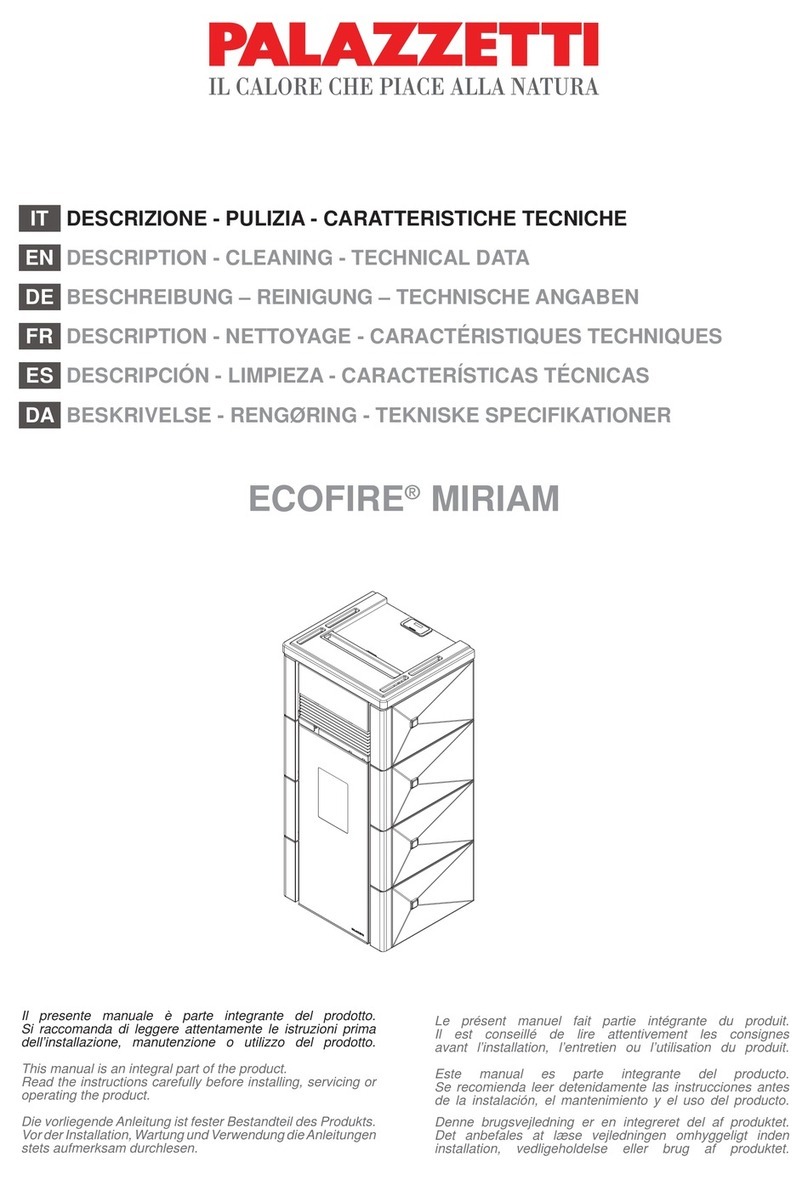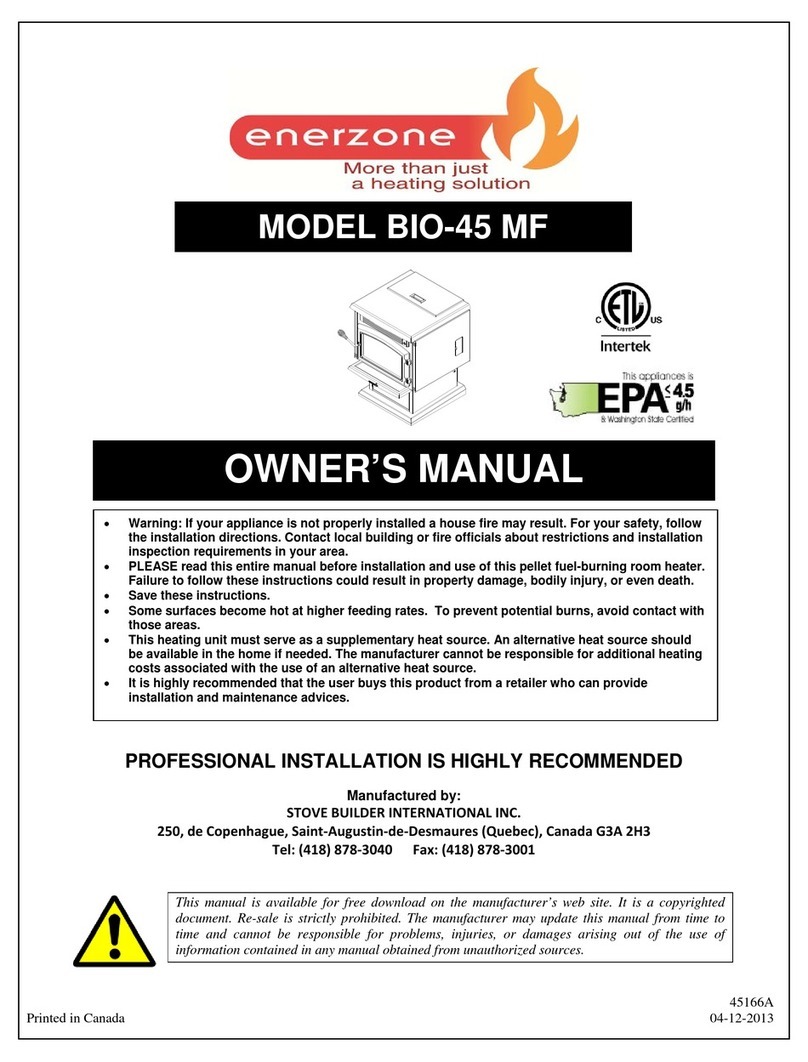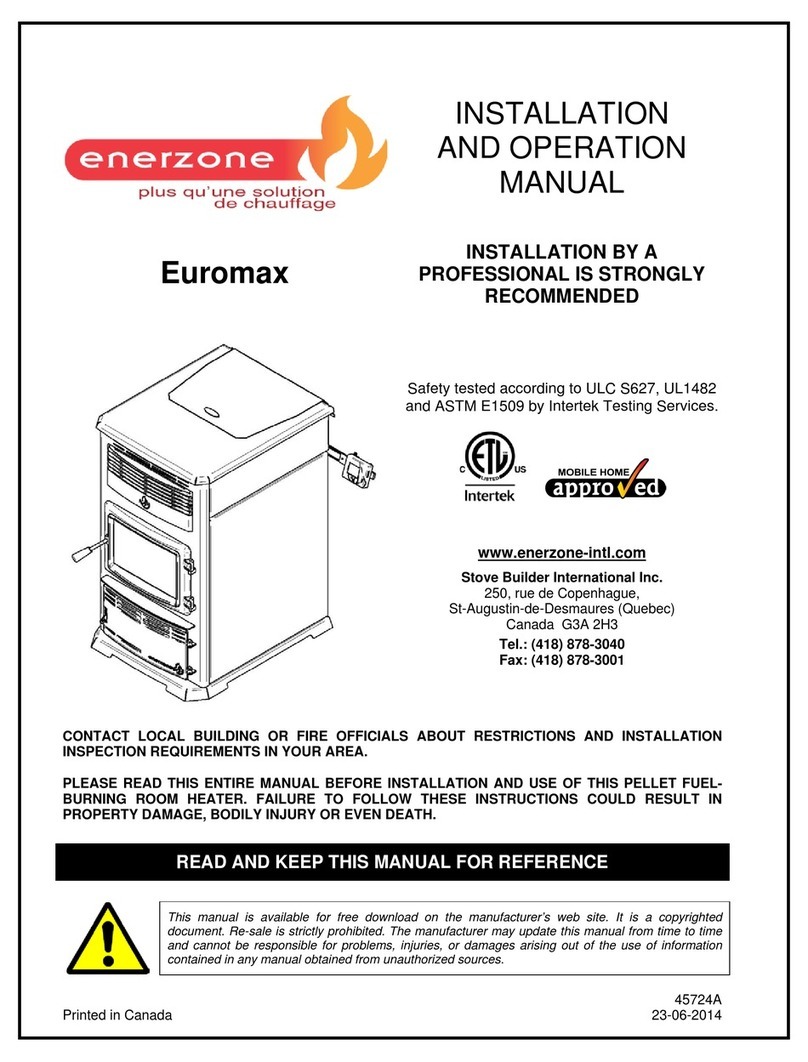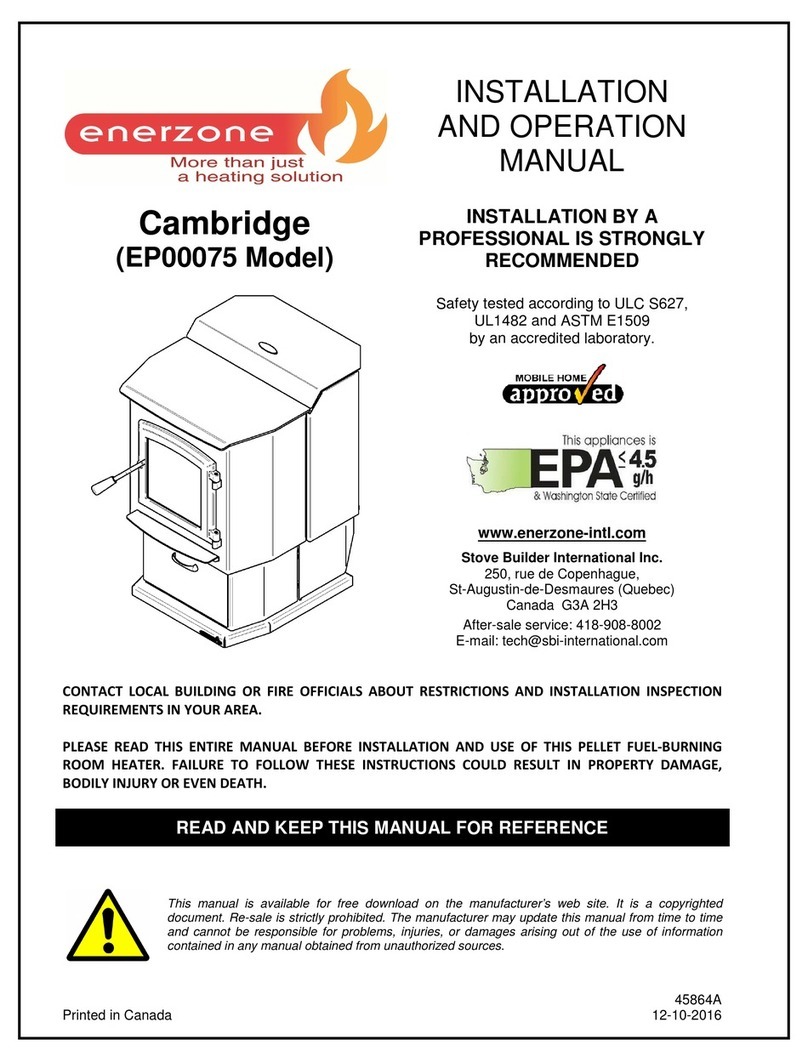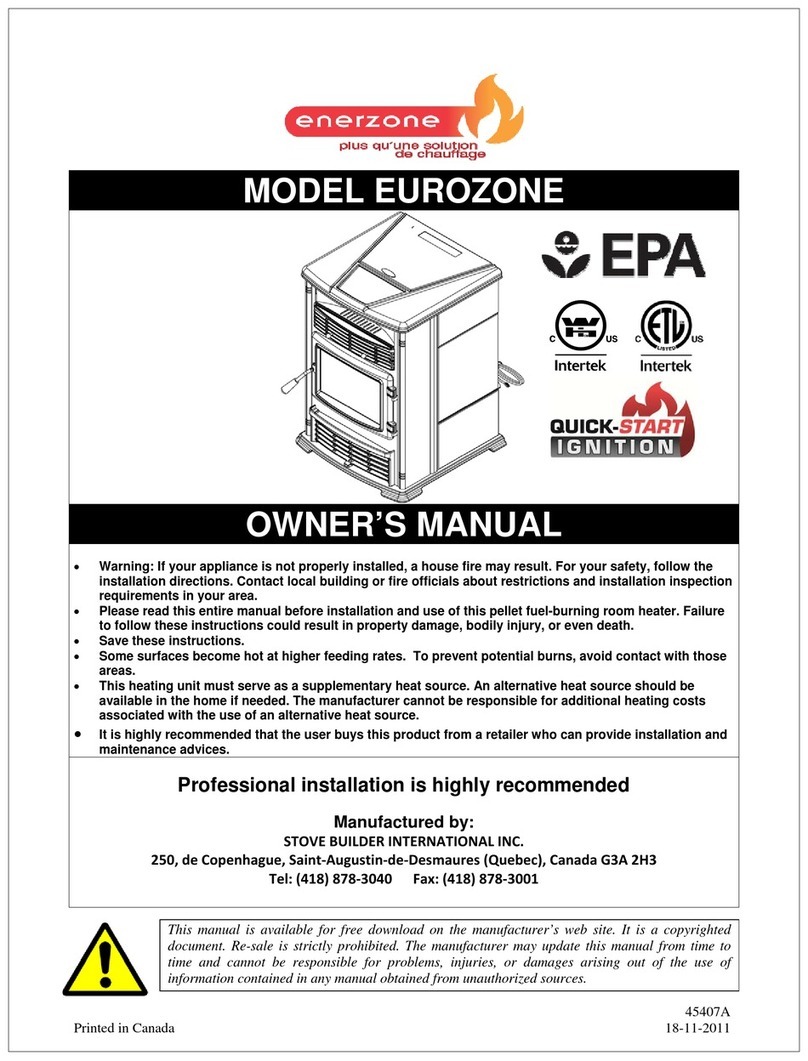
SAFETY PRECAUTIONS 3
SAFETY PRECAUTIONS
DO NOT OPERATE YOUR STOVE IF
YOU SMELL SMOKE COMING FROM IT.
TURN IT OFF, MONITOR IT, AND CALL
YOUR DEALER.
KEEP FOREIGN OBJECTS OUT OF THE
HOPPER.
NEVER USE GASOLINE, GASOLINE-TYPE
LANTERN FUEL, KEROSENE, CHARCOAL
LIGHTER FLUID, OR SIMILAR LIQUIDS TO
START OR “FRESHEN UP” A FIRE IN THIS
STOVE. KEEP ALL SUCH LIQUIDS WELL
AWAY FROM THE STOVE WHILE IN USE.
DO NOT THROW THIS MANUAL AWAY.
THIS MANUAL HAS IMPORTANT OPERATING
AND MAINTENANCE INSTRUCTIONS THAT YOU
WILL NEED AT A LATER TIME. ALWAYS
FOLLOW THE INSTRUCTIONS IN THIS MANUAL.
NEVER BLOCK FREE AIRFLOW
THROUGH THE OPEN VENTS OF THE STOVE.
DO NOT PLACE CLOTHING, FURNITURES
OR OTHER FLAMMABLE ITEMS ON OR NEAR
THE STOVE.
NEVER TRY TO REPAIR OR REPLACE
ANY PART OF THE STOVE UNLESS
INSTRUCTIONS ARE GIVEN IN THIS
MANUAL. ALL OTHER WORK SHOULD BE
DONE BY A TRAINED TECHNICIAN.
THE VIEWING DOOR MUST BE CLOSED
AND LATCHED DURING OPERATION.
THE STOVE WILL NOT OPERATE
DURING A POWER OUTAGE. IF AN
OUTAGE DOES OCCUR, CHECK THE STOVE
FOR SMOKE SPILLAGE AND OPEN A
WINDOW IF ANY SMOKE SPILLS INTO THE
ROOM.
DO NOT OPERATE THE STOVE IF THE
FLAME BECOMES DARK AND SOOTY OR IF
THE BURN POT OVERFILLS WITH PELLETS. TURN
THE STOVE OFF, PERIODICALLY INSPECT IT,
AND CALL YOUR DEALER.
DISCONNECT THE POWER CORD
BEFORE PERFORMING ANY MAINTENANCE
OR REPAIRS ON THE STOVE.
NOTE: TURNING THE STOVE “OFF” DOES
NOT DISCONNECT ALL POWER FROM THE
STOVE.
DO NOT TOUCH THE HOT SURFACES OF
THE HEATER. CONTACT WITH THE UNIT MAY
CAUSE SKIN BURNS. KEEP CHILDREN AWAY
FROM THE UNIT AND EDUCATE THEM OF THE
DANGERS OF A HIGH TEMPERATURE STOVE.
YOUNG CHILDREN SHOULD ALWAYS BE
SUPERVISED WHEN THEY ARE IN THE SAME
ROOM AS THE STOVE.
DO NOT UNPLUG THE STOVE IF YOU
SUSPECT A MALFUNCTION. TURN THE
STOVE OFF, PERIODICALLY INSPECT IT,
AND CALL YOUR DEALER.
IF THE STOVE IS INSTALLED IN A ROOM
WITHOUT AIR CONDITIONING, OR IN AN
AREA WHERE THERE IS DIRECT SUNLIGHT ON
THE UNIT, IT IS POSSIBLE THAT THIS CAN
CAUSE THE TEMPERATURE OF THE STOVE TO
RISE TO OPERATIONAL LEVELS. THIS CAN
ACTIVATE ONE OF THE SENSORS WHICH MAY
CAUSE THE STOVE TO START ON ITS OWN. IT
IS RECOMMENDED THAT THE STOVE BE
UNPLUGGED WHEN NOT IN USE FOR
PROLONGED AMOUNTS OF TIME (I.E. DURING
THE SUMMER MONTHS).
CONTACT YOUR LOCAL BUILDING
OFFICIALS TO OBTAIN A PERMIT AND
INFORMATION ON ANY INSTALLATION
RESTRICTIONS OR INSPECTION
REQUIREMENTS IN YOUR AREA. NOTIFY
YOUR INSURANCE COMPANY OF THIS
STOVE AS WELL.
THE EXHAUST SYSTEM MUST BE
COMPLETELY AIRTIGHT AND PROPERLY
INSTALLED. ALL VENT CONNECTOR JOINTS
MUST BE SEALED AND FASTENED IN
ACCORDANCE WITH THE PELLET PIPE
MANUFACTURER'S INSTRUCTIONS TO ENSURE
CONSISTENT PERFORMANCE AND AVOID
SMOKE AND ASH SPILLAGE.
THIS UNIT MUST BE PROPERLY
INSTALLED TO PREVENT THE POSSIBILITY OF
A HOUSE FIRE. THE INSTRUCTIONS MUST BE
STRICTLY ADHERED TO. DO NOT USE
MAKESHIFT METHODS OR COMPROMISE IN
THE INSTALLATION.
YOUR STOVE REQUIRES PERIODIC
MAINTENANCE AND CLEANING. FAILURE TO
MAINTAIN YOUR STOVE MAY LEAD TO
SMOKE SPILLAGE IN YOUR HOME.





